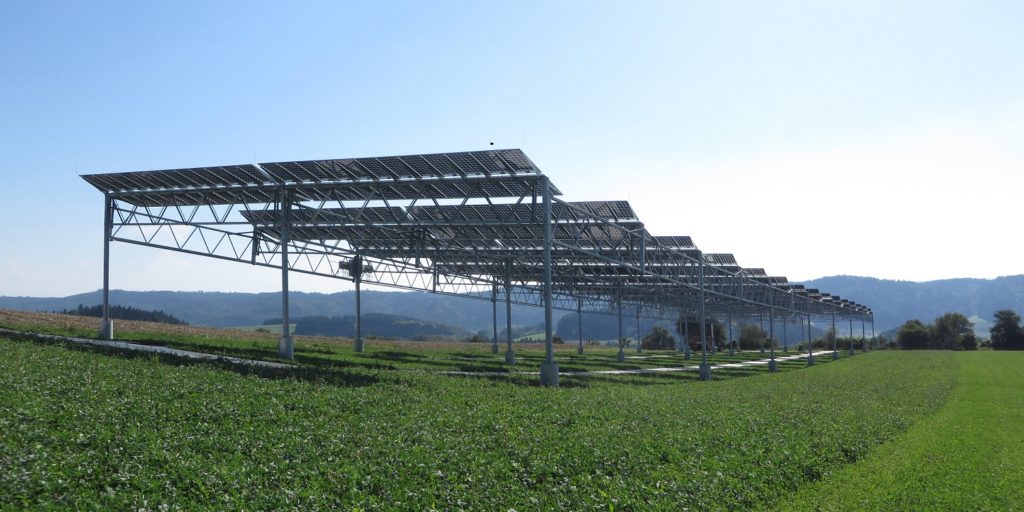In the past year, Germany’s solar energy research center, Fraunhofer ISE has been testing Germany's largest agro-photovoltaic system in the Demeter Heggelbach agricultural community, located on the shores of Lake Constance. The results obtained so far from the first harvests planted in the experimental plots are promising, according to the institute.
For instance, in the case of clover, the yield was only 5% lower compared to the reference plot. At between 18 and 19%, yield losses for potatoes, wheat and celery, were slighlty higher. Several years of testing are necessary in order to draw conclusions, said Fraunhofer.
Furthermore, losses in crop yield are offset by gains in the yield of electricity. The 194 kW system from the test facility could supply 62 homes of four people each, the researchers say. In the first 12 months, 1,266 kWh of solar energy per kW installed have been harvested, one third more than the average of 950 kWh per kW installed across Germany. Overall, the dual use of space increased the efficiency of land use by 60%, claimed the Fraunhofer ISE experts.
“The project results from the first year are a complete success: The agrophotovoltaic system proved suitable for the practice and costs as much as a small solar roof system. The crop production is sufficiently high and can be profitably sold on the market,” said Stephan Schindele, project manager of agrophotovoltaics at Fraunhofer ISE.
The project, dubbed “Agrophotovoltaic – Resource Efficient Land Use” (APV-Resola)”, has used solar modules that were installed on an area of one third hectare of arable land. The APV project will mean new sources of income for farmers.
Andreas Bett, director of the Fraunhofer ISE, emphasizes the potential of the APV with regard to a new space for the much-needed expansion of photovoltaic energy in Germany. “Until the technology is ready for the market, however, other sectors and sizes of plants should be tested and promoted for technical integration, for example in storage,” says Bett.
Expanding the space between the five meter high rows that form the 720 solar modules of bifacial glass, and thanks to the orientation towards the southwest, the researchers made sure that the crops received uniform solar radiation. The modules not only obtain solar energy in the front, but also use the reflected radiation in the back. In favorable ambient conditions, e.g. snow cover, they can increase the energy yield of the area by up to 25%. From an energy point of view, the dual use of arable land is more efficient than the pure cultivation of energy crops, which constitutes 18% of agricultural land in Germany.
In addition, about 40% of the solar electricity generated in the farming community was used directly to replenish the electric vehicle's fuel and process the products. In the summer, the load was almost completely supplied by the photovoltaic system during the day. In the future, Demeter farmers want to further optimize consumption and use the energy generated to self-supply up to 70% with the help of an energy storage system.
The project “APV Resola” is for the first time testing in real conditions the economic, technical, social and environmental aspects of combining photovoltaics and agriculture. It is supported by funds from the German Federal Ministry of Education and Research (BMBF) and the Research for Sustainable Development (FONA).
This content is protected by copyright and may not be reused. If you want to cooperate with us and would like to reuse some of our content, please contact: editors@pv-magazine.com.



great work, farmers can earn & save from solar by recovering installation cost earlier and thereafter even selling power to grid.
To be acceptable on a large scale, solar installations on farmland will need to pay much more attention to aesthetics and integration with the landscape than is shown in this pilot.